1 meter HF loop Antenna
Updated: 2010-05-31 11:05:04
Antennas/LoopRemotely tuned 1m diameter HF loop antenna for 7 to 29MHz by G8JNJ
 Amateur astronomer Ralf Vandebergh from the Netherlands is becoming well-known for his ability to capture images of the space shuttle, space station and other satellites in low Earth orbit. Recently, he tried his hand at something a little more distant: The Keyhole 11-4 satellite, which orbits at about 600 km (360 miles) above [...]
Amateur astronomer Ralf Vandebergh from the Netherlands is becoming well-known for his ability to capture images of the space shuttle, space station and other satellites in low Earth orbit. Recently, he tried his hand at something a little more distant: The Keyhole 11-4 satellite, which orbits at about 600 km (360 miles) above [...]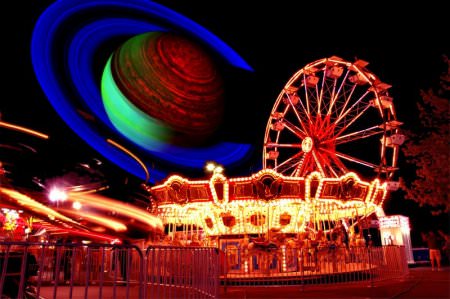 This week's Carnival of Space is hosted by Brian Schmidt over at Backseat Driving.
Click here to read the Carnival of Space #155.
And if you’re interested in looking back, here’s an archive to all the past Carnivals of Space. If you’ve got a space-related blog, you should really join the carnival. Just email an entry [...]
This week's Carnival of Space is hosted by Brian Schmidt over at Backseat Driving.
Click here to read the Carnival of Space #155.
And if you’re interested in looking back, here’s an archive to all the past Carnivals of Space. If you’ve got a space-related blog, you should really join the carnival. Just email an entry [...] Very cool news: the flying infrared observatory, SOFIA (Stratospheric Observatory for Infrared Astronomy) — which has been in the works for many years — has seen first light. What’s remarkable about this observatory is that it’s mounted in a hole in the side of a 747!
Don’t believe me? Check. This. Out:
[Click any of the images [...]
Very cool news: the flying infrared observatory, SOFIA (Stratospheric Observatory for Infrared Astronomy) — which has been in the works for many years — has seen first light. What’s remarkable about this observatory is that it’s mounted in a hole in the side of a 747!
Don’t believe me? Check. This. Out:
[Click any of the images [...] Even since amateur astronomers picked up on the orbit of the Air Force's secret X37-B space plane, others have been trying to capture images of the mini-space shuttle look-alike. So far, images have been just streaks or dots, but Universe Today reader Brent (a.k.a. HelloBozos) was actually able to image the plane in some [...]
Even since amateur astronomers picked up on the orbit of the Air Force's secret X37-B space plane, others have been trying to capture images of the mini-space shuttle look-alike. So far, images have been just streaks or dots, but Universe Today reader Brent (a.k.a. HelloBozos) was actually able to image the plane in some [...] Mars or Earth? That is the question. Find the answer back at the original post for this week's Where In The Universe challenge. And check back next week for another test of your visual knowledge of the cosmos.© nancy for Universe Today, 2010. |
Permalink |
No comment |
Add to
del.icio.usPost tags:Feed enhanced [...]
Mars or Earth? That is the question. Find the answer back at the original post for this week's Where In The Universe challenge. And check back next week for another test of your visual knowledge of the cosmos.© nancy for Universe Today, 2010. |
Permalink |
No comment |
Add to
del.icio.usPost tags:Feed enhanced [...] Flying SOFIA has opened her eyes! The Stratospheric Observatory for Infrared Astronomy (SOFIA), a joint program by NASA and the German Aerospace Center made its first observations on May 26. The new observatory uses a modified 747 airplane to carry a German-built 2.5 meter (100 inch) reflecting telescope. "With this flight, SOFIA begins [...]
Flying SOFIA has opened her eyes! The Stratospheric Observatory for Infrared Astronomy (SOFIA), a joint program by NASA and the German Aerospace Center made its first observations on May 26. The new observatory uses a modified 747 airplane to carry a German-built 2.5 meter (100 inch) reflecting telescope. "With this flight, SOFIA begins [...]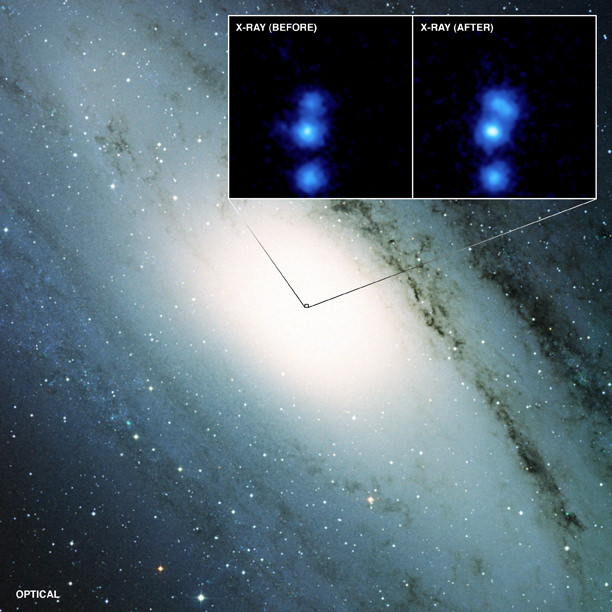 The Andromeda galaxy, the closest spiral galaxy to our own Milky Way, has a supermassive black hole at the center of it much like other galaxies. Because of its proximity to us, Andromeda – or M31 – is an excellent place to study just how the supermassive black holes in the centers of galaxies consume [...]
The Andromeda galaxy, the closest spiral galaxy to our own Milky Way, has a supermassive black hole at the center of it much like other galaxies. Because of its proximity to us, Andromeda – or M31 – is an excellent place to study just how the supermassive black holes in the centers of galaxies consume [...]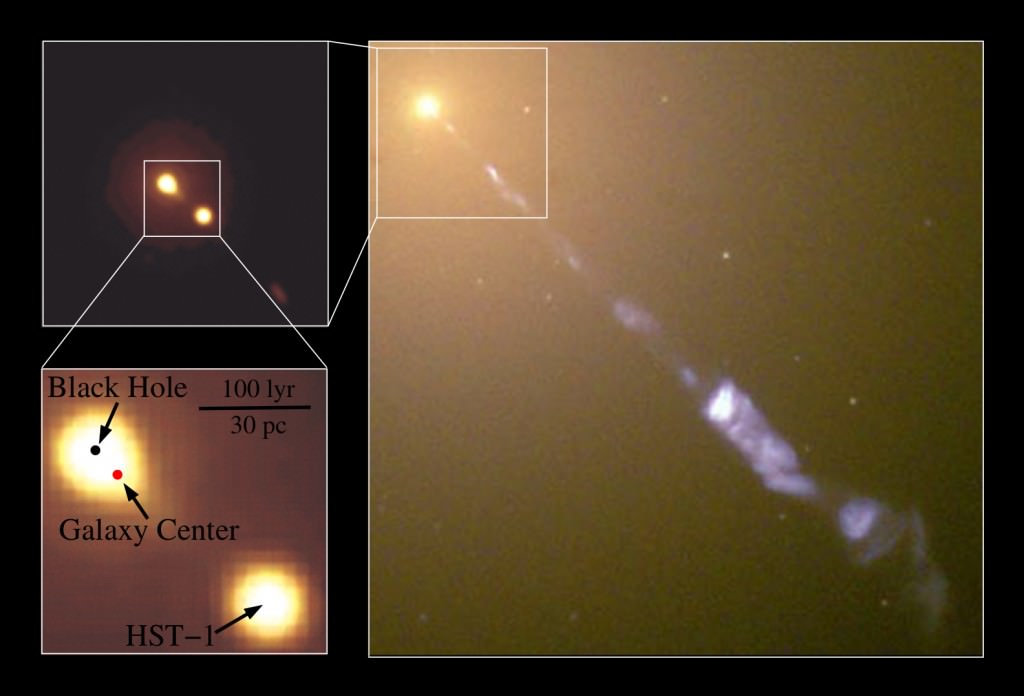 The elliptical galaxy M87 is known for a jet of radiation that is streaming from the supermassive black hole (SMBH) that the galaxy houses. This jet, which is visible through large-aperture telescopes, may have functioned as a black hole 'jetpack', moving the SMBH from the center of mass of the galaxy – where most SMBHs [...]
The elliptical galaxy M87 is known for a jet of radiation that is streaming from the supermassive black hole (SMBH) that the galaxy houses. This jet, which is visible through large-aperture telescopes, may have functioned as a black hole 'jetpack', moving the SMBH from the center of mass of the galaxy – where most SMBHs [...]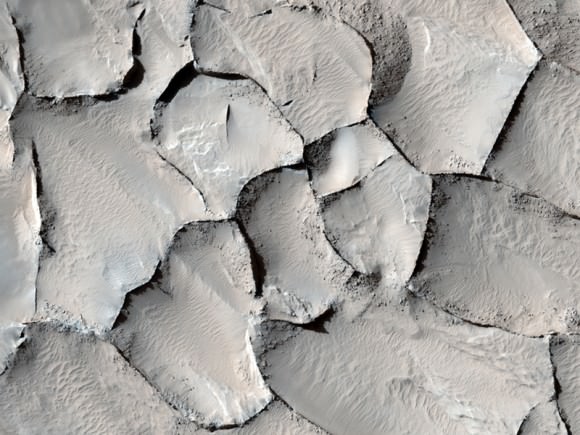 Here's this week's Where In The Universe Challenge. You know what to do: take a look at this image and see if you can determine where in the universe this image is from; give yourself extra points if you can name the instrument responsible for the image. We’ll provide the image today, but won’t reveal [...]
Here's this week's Where In The Universe Challenge. You know what to do: take a look at this image and see if you can determine where in the universe this image is from; give yourself extra points if you can name the instrument responsible for the image. We’ll provide the image today, but won’t reveal [...]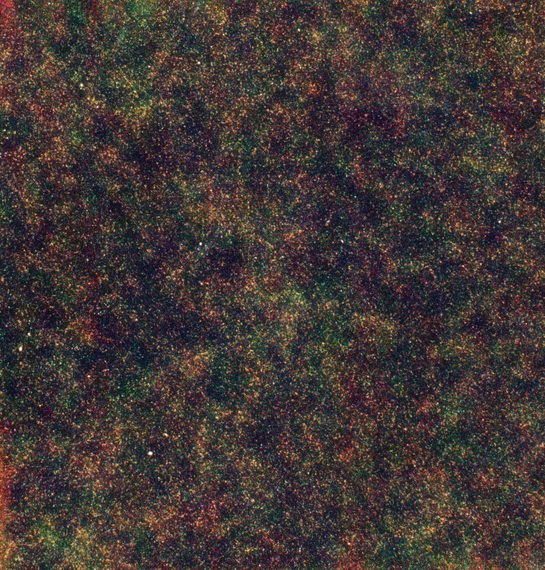 Wow. Just wow. Each of the colored dots in this new image from the Herschel telescope is a galaxy containing billions of stars. These are distant luminous infrared galaxies, and appear as they did 10–12 billion years ago, packed together like grains of sand on a beach, forming large clusters of galaxies [...]
Wow. Just wow. Each of the colored dots in this new image from the Herschel telescope is a galaxy containing billions of stars. These are distant luminous infrared galaxies, and appear as they did 10–12 billion years ago, packed together like grains of sand on a beach, forming large clusters of galaxies [...]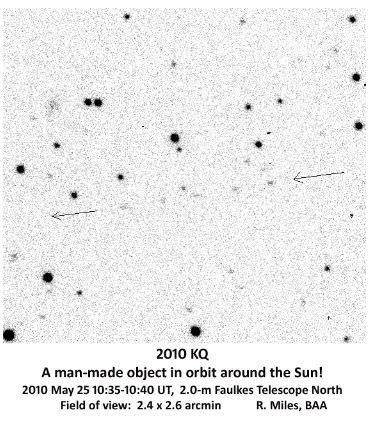 My dotAstronomy pal Edward Gomez from the Las Cumbres Observatory is reporting that a man-made object has been spotted orbiting the sun. First noticed in the Catalina Sky Survey on May 16, it was thought to be an asteroid, but then, because of its very circular and low-inclined orbit, Richard Miles, using the [...]
My dotAstronomy pal Edward Gomez from the Las Cumbres Observatory is reporting that a man-made object has been spotted orbiting the sun. First noticed in the Catalina Sky Survey on May 16, it was thought to be an asteroid, but then, because of its very circular and low-inclined orbit, Richard Miles, using the [...] Our Milky Way churns out about seven new stars per year on average. More massive stars are formed in what's called H II regions, so-named because the gas present in these stellar nurseries is ionized by the radiation of the young, massive stars forming there. Recently-discovered regions in the Milky Way that are nurseries for [...]
Our Milky Way churns out about seven new stars per year on average. More massive stars are formed in what's called H II regions, so-named because the gas present in these stellar nurseries is ionized by the radiation of the young, massive stars forming there. Recently-discovered regions in the Milky Way that are nurseries for [...] Only about 1% of supermassive black holes emit large amounts of energy, and astronomers have wondered for decades why so few exhibit this behavior. Data from Swift satellite, which normally studies gamma ray bursts, has allowed scientists to confirm that black holes "light up" when galaxies collide, and the data may offer insight into [...]
Only about 1% of supermassive black holes emit large amounts of energy, and astronomers have wondered for decades why so few exhibit this behavior. Data from Swift satellite, which normally studies gamma ray bursts, has allowed scientists to confirm that black holes "light up" when galaxies collide, and the data may offer insight into [...]